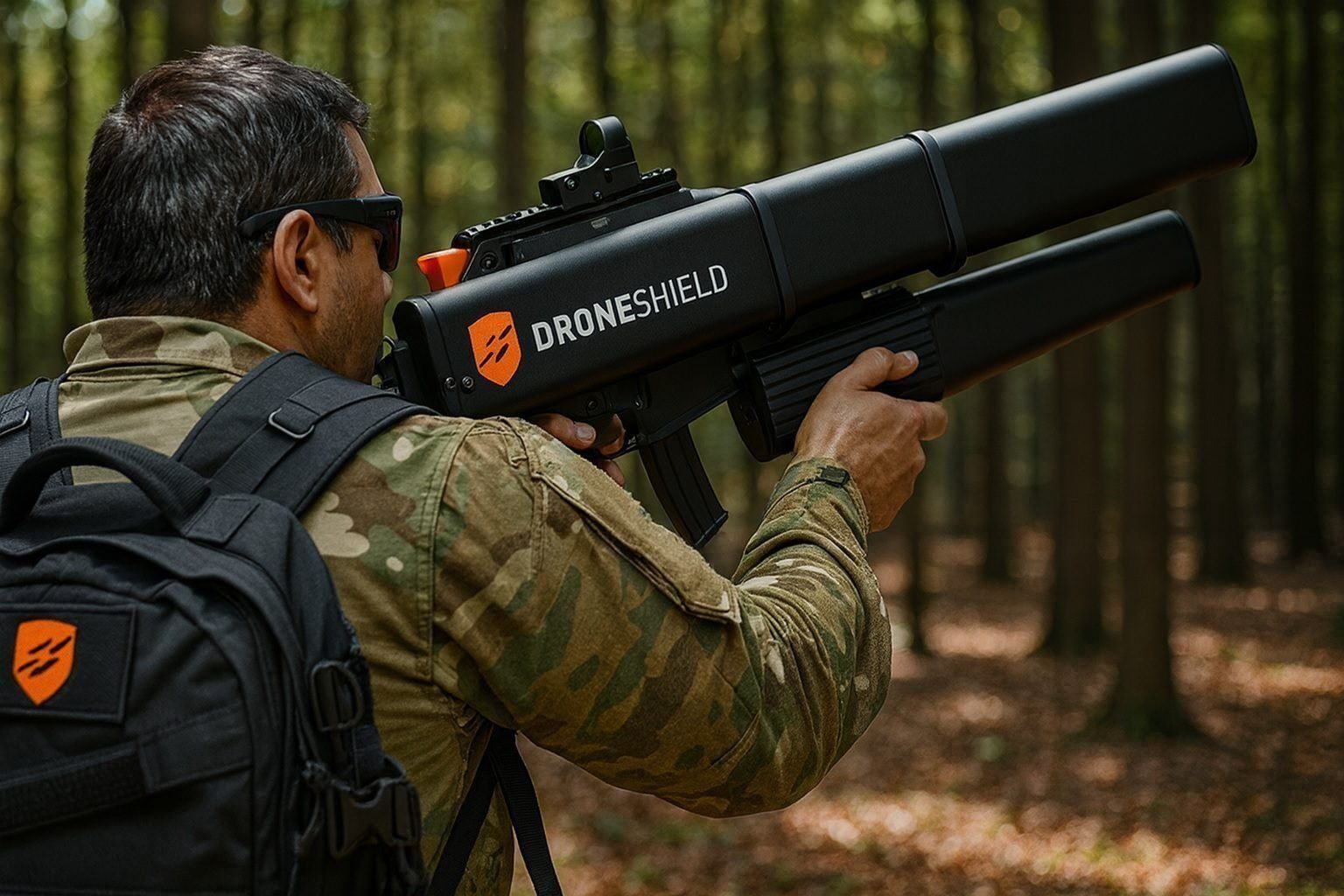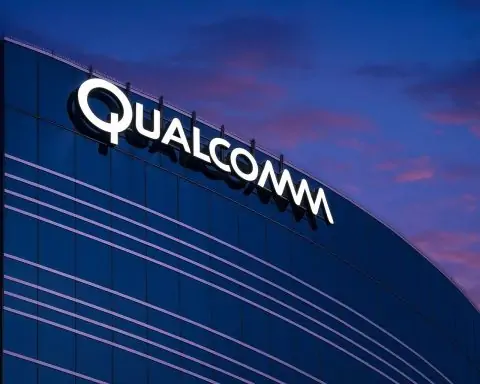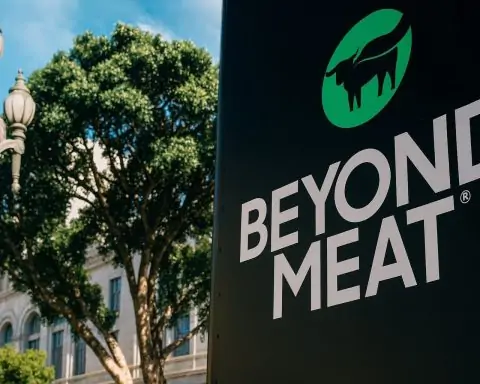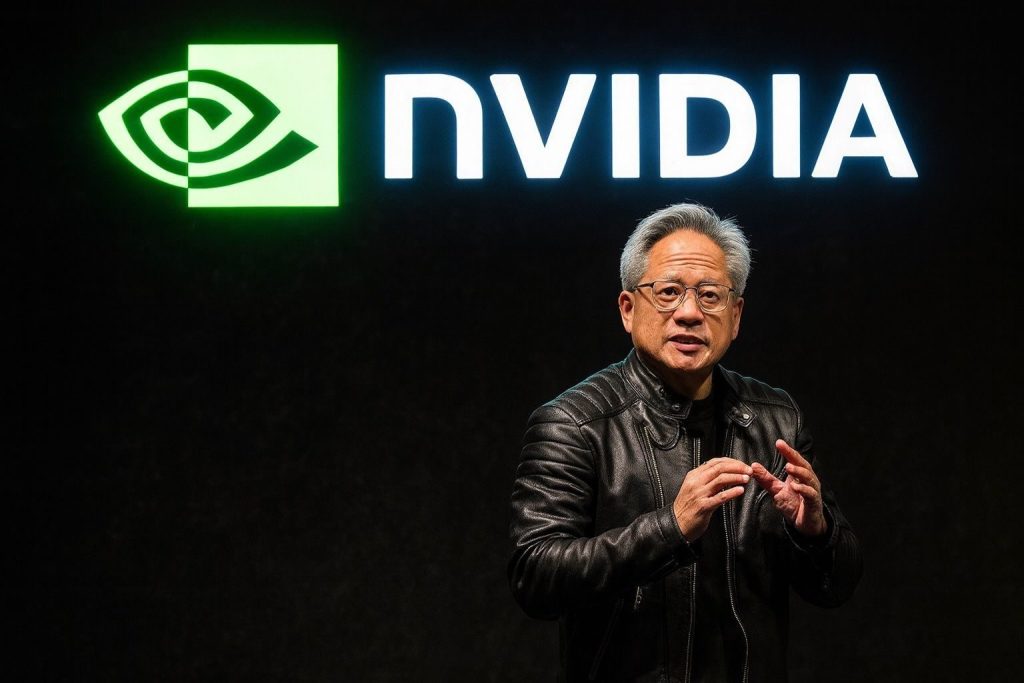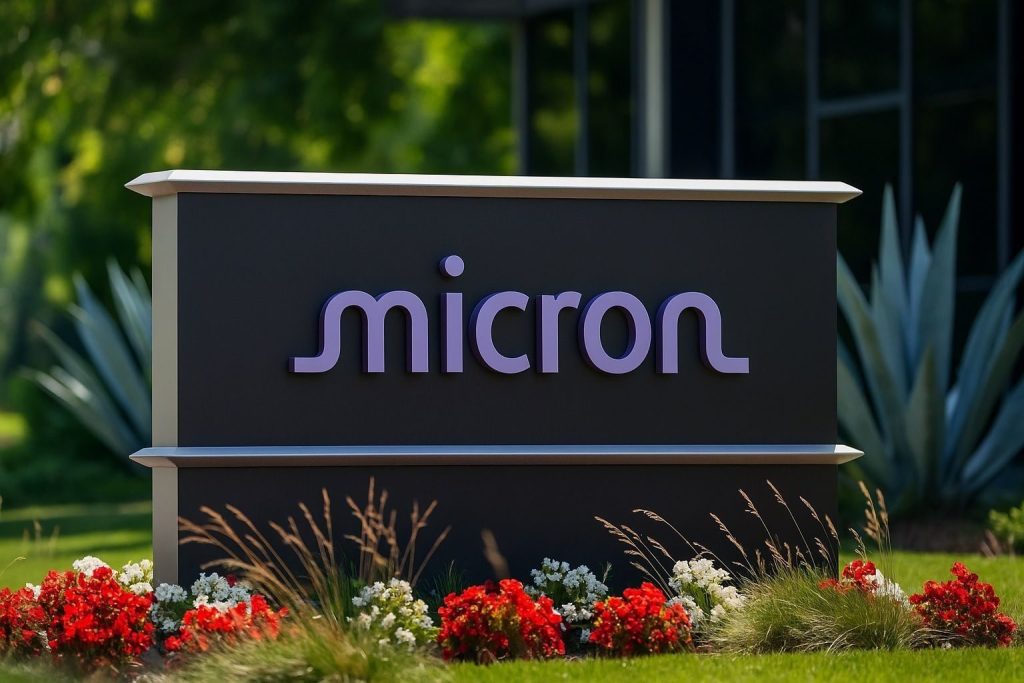DroneShield Limited (ASX:DRO) remains one of the most closely watched names on the ASX, and today was no exception. On Friday, 28 November 2025, the counter‑drone specialist filed a fresh Appendix 2A for new employee shares while its stock continued to trade nervously after a brutal November sell‑off and ongoing scrutiny of executive share sales.
DroneShield share price today: modest fall caps a wild month
DroneShield shares closed Friday’s session at A$1.98, slipping about 1% from Thursday’s A$2.00 close. Intraday, the stock traded between roughly A$1.93 and A$2.04, with around 19 million shares changing hands – still heavy turnover for a mid‑cap name. [1]
Mid-morning commentary from Market Index had the stock down more sharply, around A$1.95 (-2.25%), noting that “sentiment remains fragile after recent controversies” and that investors appear hesitant to commit fresh capital. [2]
Over the last ten trading days, DroneShield is down roughly 15%, with losses in six of those sessions and average daily volatility north of 10%, a profile short‑term traders love and conservative investors tend to avoid. [3]
Zooming out only makes the picture stranger:
- The stock has fallen around 70% from its recent 52‑week high above A$6.70 to today’s sub‑A$2 level. [4]
- Even after that collapse, DroneShield remains up well over 100% versus where it traded a year ago, after a huge run fuelled by contract wins and the global race to counter cheap battlefield drones. [5]
At today’s price, DroneShield’s market capitalisation sits around A$1.8–1.82 billion. [6]
New Appendix 2A: 3.1 million employee performance shares hit the market
The main company‑specific news today was a fresh Appendix 2A – Application for quotation of securities lodged with the ASX. [7]
Key details:
- Number of new shares: 3,136,127
- Security type: Fully paid ordinary shares (ASX code: DRO)
- Issue date: 28 November 2025
- Source: Shares issued on exercise of performance options held by employees
In today’s filing, DroneShield clarified that these shares arise from the exercise of some staff performance options whose vesting had been announced on 4 November. The company described the options as an integral part of its remuneration structure, designed to attract and retain talent to support growth. [8]
Given an estimated share count of a little over 900 million based on the current market cap and share price, this new batch represents roughly 0.3%–0.4% dilution – small on its own, but symbolically important given investors are hypersensitive to insider incentives right now. [9]
It also follows a much larger November issuance: earlier this month, around 31 million new shares from previously vested options were admitted to quotation, an event that coincided with sharp share price weakness. TechStock²
Executive share sales and governance concerns still dominate the story
While today’s Appendix 2A is technically about employee options, most commentary on 28 November focused on insider selling and governance, not the incremental dilution.
Fresh commentary on the November share dump
A new piece on ShareCafe today – “DroneShield’s Executives’ Share Sales Raise Eyebrows” – revisited the recent selling by CEO Oleg Vornik, chairman Peter James and director Jethro Marks. It highlighted:
- Large disposals by the trio that helped trigger the share price collapse.
- Historical links between financier Eugene Tablis (Bergen Asset Management), DroneShield and the collapsed dairy group Halo Food Co, where James also served as chair.
- The fact that the same audit firm was involved in both Halo’s option structures and the KPIs underpinning DroneShield’s generous performance options. [10]
The Australian Financial Review weighed in with “The DroneShield share sales should not have been a surprise”, arguing that the eventual cash‑out of large performance option packages had been clearly signposted in earlier disclosures, even if the scale and timing shocked the market. [11]
In parallel, a widely shared column in The Australian this week reported that Vornik defended his sale of about 14.8 million performance shares, worth roughly A$50 million, saying the sale was tied to a pre‑agreed milestone of A$200 million in revenue, and that he had done nothing improper. The piece also noted that non‑executive directors have launched a review of DroneShield’s disclosure and trading policies. [12]
Streetwise Reports, in an article titled “Executive Share Sales Follow Major Cash Milestone at Defence Tech Firm,” likewise framed the disposals as the result of performance options vesting after rolling cash receipts exceeded A$200 million, quoting the company’s claim that the sales were “unrelated to the growth trajectory of the company.” [13]
Leadership anxiety and calls for tighter rules
Another article published today, “Leadership Exodus Rattles DroneShield Investors”, summarised the situation bluntly: the stock has lost around two‑thirds of its value in a month as investors question why insiders were so eager to sell. The piece notes that DroneShield has now launched an independent review of its disclosure and trading policies as it tries to rebuild trust. [14]
Separately, a prominent Australian hedge fund recently detailed 17 “red flags” and disclosed a short position in DroneShield, amplifying the perception that governance risks are now central to the thesis. [15]
AInvest’s recap of the turmoil this month points out that:
- DroneShield shares fell about 67% in a single month, including a 30%+ crash in early November.
- The sell‑off was aggravated by a withdrawn ASX announcement and subsequent director sale notices lodged after market, both of which further eroded investor trust.
- Leadership changes – including appointing Angus Harris as CTO and moving Angus Bean to Chief Product Officer – are intended to steady the ship, but do not by themselves resolve deeper governance questions. [16]
Taken together, today’s coverage suggests that perception, not product, is DroneShield’s main headache right now.
Under the surface, the business is still growing aggressively
All this drama is happening against a backdrop of explosive operational growth.
Record revenue and a swelling pipeline
DroneShield’s latest quarterly numbers are eye‑catching:
- Q3 2025 revenue: about A$92.9–93 million, up roughly 750–1,000% year‑on‑year, depending on the source. [17]
- Revenue for the first three quarters of 2025:A$165.2 million, up 431% versus 2024. [18]
- Profit before tax for the first half of 2025: about A$5.2 million, marking the company’s most profitable half‑year to date. [19]
- Gross margins sit around the 65–68% mark, unusually high for a hardware‑heavy defence company. [20]
Streetwise Reports notes that year‑to‑date committed revenue reached about A$193.1 million by October, already more than triple DroneShield’s full‑year 2024 revenue of ~A$57 million. [21]
Contract wins in Europe and the US
Operationally, DroneShield keeps racking up deals:
- In mid‑2025 it secured a record A$61.6 million European contract, larger than its entire 2024 revenue. [22]
- On 25 November 2025, the company announced a follow‑on A$5.2 million contract via a long‑standing European reseller to supply handheld counter‑drone systems, noting that it already has inventory ready and expects cash payment in Q4 2025. [23]
- Earlier this month it revealed three handheld systems contracts with the US government and said it had received 78 purchase orders so far in 2025, with a median order size of about A$400,000, up from 66 orders for all of 2024. [24]
Defence outlets and investor presentations consistently highlight a sales pipeline above A$2.5 billion, spanning hundreds of projects across NATO countries, Asia and domestic customers. [25]
Capacity and R&D: building a much bigger machine
DroneShield is spending heavily to keep up:
- The company is investing more than A$13 million in new facilities, including a 3,000 m² production site in Sydney’s Alexandria and a new R&D hub in Adelaide. [26]
- Management aims to lift total annual manufacturing capacity to about A$2.4 billion by the end of 2026, up from roughly A$500 million today, backed by additional planned facilities in Europe and the US. [27]
- Annual R&D spend now exceeds A$50 million, according to recent investor communications, reflecting a push into AI‑driven electronic warfare and software subscriptions. [28]
On its investor relations site, DroneShield emphasises that it is the only pure‑play counter‑UAS company listed on the ASX, operating in a global counter‑drone market it estimates at over US$10 billion and growing quickly thanks to conflicts like Ukraine. [29]
Fundamentally, then, the business looks nothing like the tiny speculative stock it was a few years ago. The problem is that the share price – and now the governance debate – has moved faster than many investors are comfortable with.
Valuation snapshot: big market cap, messy metrics
Trying to value DroneShield today is a bit like trying to pin jelly to the wall.
- At A$1.98 per share, the company’s market cap is roughly A$1.8–1.82 billion. [30]
- The share price has swung between A$0.585 and A$6.705 over the past 52 weeks, underlining just how sentiment‑driven the name has become. [31]
Because DroneShield is still ramping and has only recently flirted with profitability, traditional valuation ratios look odd:
- A valuation screen from valueinvesting.io puts DroneShield’s EV/EBITDA at about –339x as of 28 November 2025, reflecting positive enterprise value but still‑negative trailing EBITDA. [32]
- Some data providers show sky‑high or even meaningless P/E ratios because net income is close to zero or slightly negative on a trailing basis. [33]
In other words, the market is paying up for growth, optionality and strategic positioning, while largely ignoring conventional earnings multiples – a stance that can reverse abruptly when confidence cracks.
That’s exactly what has happened this month: one commentator at TheBull.com.au estimated that the recent plunge has erased around A$2 billion in market value from the stock’s peak, even though revenue and backlog continue to grow. [34]
Why DroneShield stock remains extremely volatile
Putting it all together, DroneShield on 28 November looks like a textbook case of a high‑growth story colliding with governance risk:
- Operational metrics are booming
Revenues, order flow and production capacity are all expanding at triple‑digit rates, with a deep pipeline in Europe and the US and a technology suite that defence customers clearly want. [35] - Incentives and communication are under the microscope
Large insider sales, after‑hours disclosures, withdrawn announcements and hedge‑fund criticism have combined into a narrative that management has prioritised cashing in over reassuring minority shareholders. Today’s commentary from ShareCafe, AFR and others kept that issue front and centre. [36] - Fresh employee shares keep highlighting the overhang
While today’s 3.1 million employee shares are small in percentage terms, they reinforce how central options are to DroneShield’s pay structures and why investors are obsessing over who is selling, when, and why. [37] - Valuation leaves little room for error
Even after a 70% drawdown, DroneShield still trades like a high‑growth tech stock rather than a mature defence contractor. With negative EBITDA on some measures and huge future capacity plans baked into the story, any doubt about governance or disclosure can hit the price disproportionately hard. [38]
That mix explains why you see days like Thursday’s –7.8% slide at A$2.00, followed by today’s relatively modest –1% dip: volatility is the new normal. [39]
What to watch after 28 November 2025
For investors tracking DroneShield into December and 2026, the key questions now are less about “do drones matter?” and more about “can this management team rebuild trust?” Some focal points:
- Outcome and scope of the independent review of disclosure and trading policies, and whether the board tightens its own rules on insider sales. [40]
- Any further ASX or regulatory engagement stemming from the withdrawn announcement, price queries and director transactions earlier in the month. [41]
- The pace at which DroneShield converts its A$2.5 billion‑plus pipeline into cash receipts while maintaining high margins. [42]
- Progress on the new production and R&D facilities in Sydney, Adelaide, Europe and the US, which are critical to justifying the planned A$2.4 billion manufacturing capacity. [43]
- Any additional insider transactions or new option grants, which will be read as signals about internal confidence regardless of the official explanation. [44]
Important note
This article is general news and commentary, not personal financial advice. It doesn’t take into account your objectives, financial situation or needs. DroneShield is a high‑risk, highly volatile defence technology stock; anyone considering an investment should do their own research, read the company’s official ASX releases in full, and consider speaking with a licensed financial adviser before making decisions.
The bigger story here is not just one company’s roller‑coaster chart, but how markets price fast‑growing defence tech when governance, incentives and war‑driven demand all collide.
References
1. stockinvest.us, 2. www.marketindex.com.au, 3. stockinvest.us, 4. www.barchart.com, 5. www.abc.net.au, 6. stockanalysis.com, 7. company-announcements.afr.com, 8. company-announcements.afr.com, 9. stockanalysis.com, 10. www.sharecafe.com.au, 11. www.afr.com, 12. www.theaustralian.com.au, 13. www.streetwisereports.com, 14. www.ainvest.com, 15. www.afr.com, 16. www.ainvest.com, 17. www.investing.com, 18. www.intelligentinvestor.com.au, 19. www.intelligentinvestor.com.au, 20. www.investing.com, 21. www.streetwisereports.com, 22. www.marketindex.com.au, 23. news.defcros.com, 24. drasticnews.com, 25. www.intelligentinvestor.com.au, 26. company-announcements.afr.com, 27. www.droneshield.com, 28. www.intelligentinvestor.com.au, 29. www.droneshield.com, 30. stockanalysis.com, 31. www.barchart.com, 32. valueinvesting.io, 33. hellostake.com, 34. www.google.com, 35. www.streetwisereports.com, 36. www.sharecafe.com.au, 37. company-announcements.afr.com, 38. valueinvesting.io, 39. stockinvest.us, 40. primaryignition.com, 41. announcements.asx.com.au, 42. www.intelligentinvestor.com.au, 43. www.droneshield.com, 44. www.marketindex.com.au
